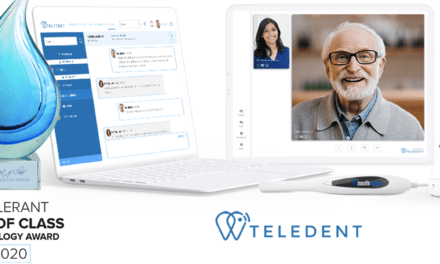Two orthodontists share how they have used this remote monitoring platform to improve compliance, better track and triage patients, and improve the value per visit in their practices.
By Alison Werner
Talk to an orthodontic practice that has incorporated a remote monitoring platform into their orthodontic practice and they will tell you their workflow has changed significantly. The technology has proven that it can not only free up the schedule for higher revenue generating appointments but also improve treatment outcomes.
Open Up the Schedule and Manage a Pandemic
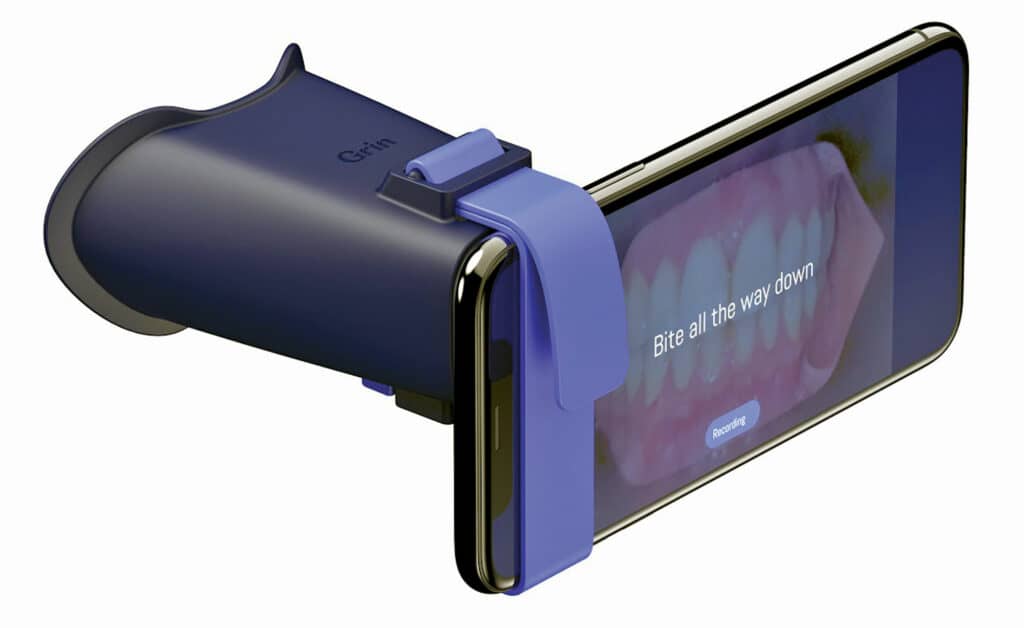
Just as medicine turned to telehealth, orthodontists turned to teleorthodontic platforms with the COVID shutdown and subsequent social distancing requirements. One such orthodontist was Bryan Allen Lockhart, DDS, of Dual Image Orthodontics, located in Charlotte, NC.
Lockhart had already been looking at remote patient monitoring tools to help open up his schedule before the pandemic hit. “We were starting to have a lot of quick appointments that were starting to clog the schedule,” he says. His plan was to use the technology for cases that could progress without the need to reactivate frequently—ie, clear aligners and lingual braces.
But with the pandemic, he needed a way to monitor patients while also limiting the number of in-person appointments. So, he decided it was time to take the plunge, opting for the Grin platform.
The Grin platform, which was developed by orthodontist Adam Schulhof, DMD, and recently received a strategic investment from the AAO Innovation and Transformation Fund, consists of the Grin App, the first-of-its-kind Grin Scope, and Grin Scope Mini. The latter is an FDA listed medical device which attaches to any smartphone camera and takes scans to measure changes to patients’ teeth.
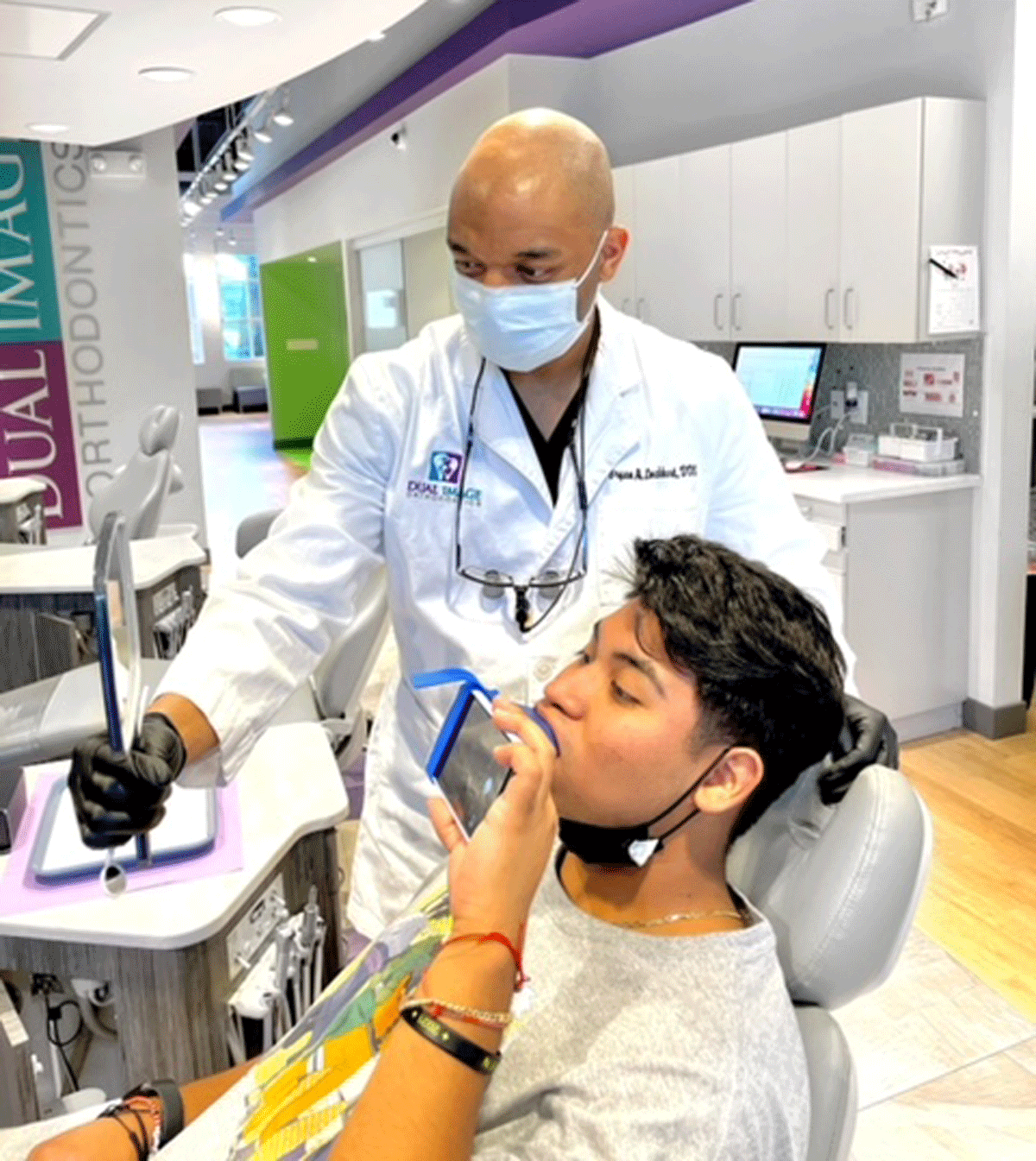

Remote Monitoring to Manage Compliance
Jeremy Dewbre, DDS, MS, of Farrow & Dewbre Orthodontics, in Oklahoma City, meanwhile, was already a few months into using the Grin remote monitoring platform in his orthodontic practice when the pandemic hit. His main motivation when he adopted Grin in November 2019: improving compliance.
Dewbre’s preferred treatment modality is aligners, but with aligner treatment comes the headache of how to ensure patient compliance. “I tell patients this all the time: The one thing we haven’t figured out with aligners is how to get them to work when you don’t wear them,” says Dewbre, who went all in on Invisalign in 2017.
Dewbre is a firm believer that patients will be more compliant with treatment if they know a check-in is coming up. But the problem is an in-person check-in is a drain on the practice’s schedule. With remote monitoring technology, Dewbre found a solution that not only made it possible to do weekly check-ins and ensure better compliance but also open up the schedule.
“Once we put remote monitoring in place, our appointment intervals stretched even further, allowing patients to work through entire sets of aligners before being seen in-person,” he shares.
And the doctor isn’t the only one who appreciates the accountability that comes with frequent check-ins via remote patient monitoring. “Parents really love the idea of their child being monitored and held accountable about their wear times by the doctor. Compliance is the biggest obstacle when presenting aligner treatment and this helps alleviate any concerns,” Dewbre says, adding that parents also appreciate this modern approach to orthodontic experience.
“Everything in their world revolves around an app and instant access. Why should their braces or aligners be any different?”
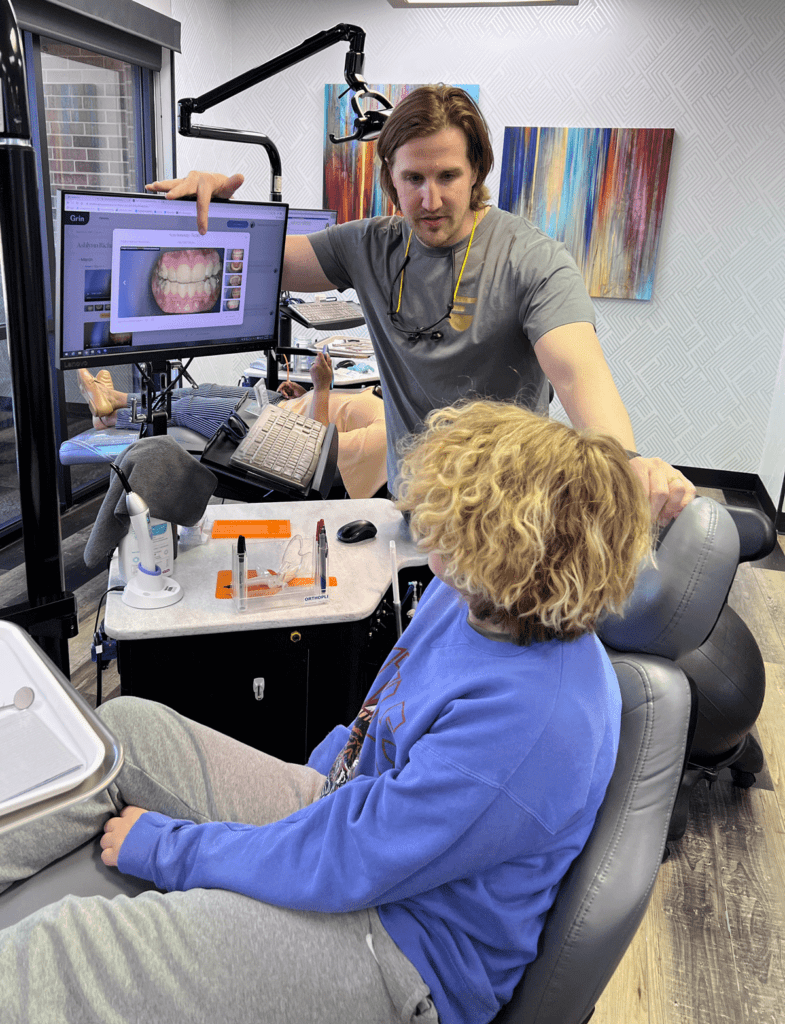
Remote Monitoring to Track Progress and Triage Emergencies
In addition to helping with compliance, this teleorthodontic technology creates efficiencies. As Dewbre points out, even though patients are seen in person less frequently, the practice is better able to track treatment progression and address any problems sooner rather than later.
“If tracking issues arise that aren’t recovered with additional days of wear time, refinements are booked sooner than when we saw patients on a set schedule without monitoring. This allows us to get cases back on track and finish sooner,” he says.
Moreover, Dewbre and his staff are better prepared for when a patient does come in. “It’s much more efficient because we know exactly how they’re tracking before they have even set foot in the office. We complete their IPR, reload chewies and cases, give a high five, and we’re done.”
Lockhart echoes this sentiment. “We are allowed to get a lot more out of each appointment. For example, if the patient is on their last aligner, and I see we still have some work to be done, I’ll have the team go ahead and update the records before I have to see the patient. Traditionally, the team would wait for me to check the patient first and make a decision if we are done or if more treatment was needed—which creates a bottleneck.
“Another example is when clear aligner patients come in for emergencies, I know exactly which buttons are off before they come in. Most patients call attachments and elastic buttons the same thing; so a lot of the time, we don’t know what they really mean when they call in. With Grin, I know exactly what’s off and we can have everything set up and ready to go once the patient arrives.”
And for those occasions when an attachment comes off and replacing it is not critical, Lockhart uses remote monitoring platform to triage the case. So instead of scheduling an emergency appointment, Lockhart reassures the patient that the repair can wait until their next scheduled visit. “We were having a lot of patients come in, only to be told that it isn’t a big deal. Those types of waste-of-time appointments are eliminated because I can triage through Grin.”
Remote Monitoring as a Standard of Care
In Dewbre’s practice, teleorthodontics is presented as part of every aligner case instead of making it an option for the patient/parent. “It’s presented as part of our standard of care.”
The same goes for Lockhart’s aligner and lingual braces patients. While he initially made it optional, the practice soon started telling patients they would be using Grin instead of asking them. They never received any pushback.
“I explain the benefits of not having to be seen in the office as frequently, but actually be monitored so much more closely,” says Lockhart of his experience with patients. “They love it. They are amazed by the technology. Everyone is busy now-a-days so not having to worry about us as much is very appealing.”
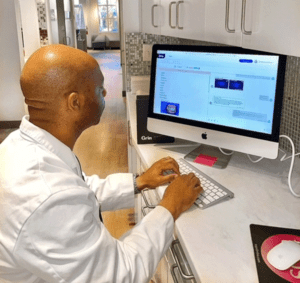
The Remote Monitoring Workflow
For Lockhart, the key to getting staff onboard with the Grin remote monitoring platform was to have the entire team watch the company’s training webinar. And even though he dedicated one team member to be in charge of setting up the accounts and teaching patients how to scan, he was sure to have all the staff learn how to do the same. From there, the clinical team is responsible for submitting and onboarding patients, while Lockhart is responsible for correspondence with patients.
Lockhart reports this takes about 5 to 10 minutes of his day and that most of his responses are focused on complimenting patients on their progress and providing motivation. He relies on templates to streamline this workflow. Lockhart opts to check the platform first thing in the morning, right before lunch, and again at the end of the day before leaving. Each session, he says, lasts about 2 to 3 minutes. Occasionally when he receives messages on the weekend that require a quick response, he’ll dash one off via his phone.
Meanwhile, in Dewbre’s practice, the treatment coordinators enroll all new aligner patients, while the clinical assistants deliver Grin to the patient and then review instructions with them. From there, two virtual clinical assistants review all the scans, communicate with patients, and catch non-tracking issues. If any concern or questions arise, the virtual assistants reach out to the doctor.
Dewbre says training a “virtual assistant” as his Grin coordinator was key to a seamless integration of the technology. “The doctor has already diagnosed, treatment planned, and designed a ClinCheck to be as effective as possible. Your team can be trained to ensure that your plan is being executed properly,” he points out. In Dewbre’s practice, this coordinator position is actually a remote position.
According to Dewbre, with the system his practice has implemented, he spends minimal time handling correspondence, and has an “on-the-fly, as-needed” approach. The virtual assistant meanwhile spends about an hour a day during the work week checking the remote patient monitoring platform. On weekends (Friday to Sunday), she logs in for approximately 30 minutes.
Remote Monitoring as Part of Observation and Retention Programs
Since implementing remote monitoring, both Lockhart and Dewbre have expanded how they are using the technology in their practices.
Lockhart recently started to test its efficiency with fixed braces cases and has added on-demand Grin appointments. He also offers “aligner pickups” in conjunction with remote monitoring, where a patient’s aligners are left at the front desk for pickup.
Meanwhile, Dewbre has expanded the use of remote monitoring to his observation program. Known as the “Glow Up Club,” Dewbre’s practice enrolls patients who are not currently ready for treatment at their initial visit and has them scan quarterly for a virtual visit with the treatment coordinator.
Remote monitoring is also a part of Dewbre’s retention program. Both braces and aligner patients are enrolled and asked to scan weekly during their full-time wear phase, and monthly for the following 6 months.
Increase the Value Per Visit
When Dewbre set out to use remote patient monitoring, his initial goal for the technology was focused on compliance and aligner cases. With additional implementation of this teleorthodontic platform into both his observation and retention programs, he says he has seen case acceptance increase, chair time decrease, fewer appointments, and increased clinical efficiency.
Lockhart says that even though his practice is growing, the number of patients they see has stayed relatively the same. “Grin has opened up and decluttered our schedule. A lot of unnecessary quick appointments that occupied space in our schedule were reduced dramatically,” he shares.
But to really assess the impact of this teleorthodontic technology, Lockhart pays close attention to one key metric: value per visit. “To a certain degree, how much you charge is negated if you have to see patients for an infinite amount of appointments,” he says. “Using Grin allowed us to increase our value per visit because we only see the patients when some sort of change or activation needs to occur. Because of that, we were able to see our patients less, but keep the same standard of quality finishes.” OP
Alison Werner is the chief editor of Orthodontic Products.





